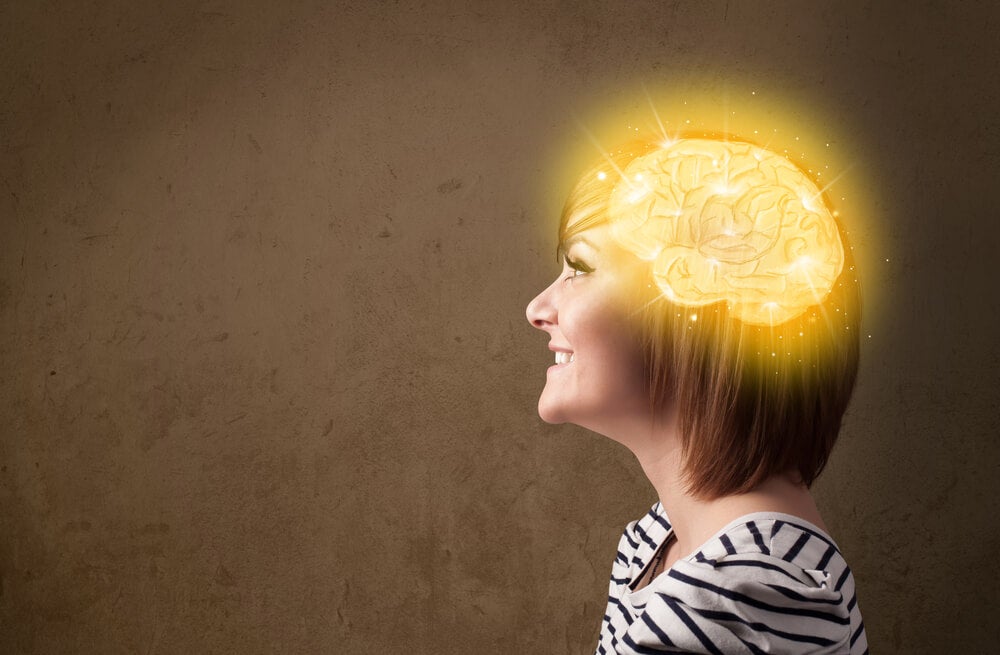The true focus of our feelings and emotions is not on the heart, but on the brain. Moreover, according to recent research, much of our happiness is in the left hemisphere.
So every time we feel excited, full of energy, positivity and hope, the area with the greatest neuroactivity is precisely the left prefrontal cortex.
- That’s why the subject is always interesting.
- Daniel Goleman wrote about this in a New York Times article and explained that in recent years neuroscience.
- Psychology.
- Buddhism.
- And spirituality have come together to get answers in seemingly distant disciplines.
We know that a very productive and enriching meeting was held in May 2000. The Dalai Lama met with the best neurologists and psychologists in the area for a specific purpose.
Its purpose was high and practical: to know how Buddhism handles negative emotions, to know what happens in a person’s brain accustomed to practicing meditation, and to use a mental approach based on kindness, altruism and happiness.
The meeting lasted five days in a remote location in Dharamsala, India, which is that it has been very productive for one of these scientists. Richard Davidson, director of the Emotional Neuroscience Laboratory at the University of Wisconsin and author of books such as The Emotional Profile of Your Brain, came out of the meeting with a working hypothesis.
“Recent research shows that when we sympathize, engage through friendships or socialize, the brain activates many of the same networks as when we experience physical or other pain. -Richard Davidson-
Dr. Richardson, famous for his research in affective neuroscience, after years of work and analysis in his university of Wisconsin lab, repeats in his lectures a phrase, the same commentary: the basis of a healthy brain is goodness.
Today he is president of the Center for Healthy Mind Research at the same university and it is common for us to be surprised from time to time with a new revelation.
For example, in 2008 one of his studies focused on demonstrating the relationship between neuroplasticity and meditation techniques, that is, people accustomed to practicing this practice for much of their lives have greater electrical activity, greater ability to concentrate, learn and generate new neural connections.
On the other hand, if you look at her 2012 book The Emotional Life of Your Brain, we find one of her most interesting theories: she simply says that happiness is in her left brain. Let’s look at more data on this idea.
Throughout our evolution as a species, this mass of billions of neurons within our skull has specialized, that is, to say that happiness is in your left hemisphere is just a way of expressing how and how our positive emotions developed over time.
Dr. Richard Davidson left that base. That is, he already knew the relationship between the limbic system and the frontal lobes, however, after a few years of research and by MRI tests, he could see something very interesting:
Happiness is in the left hemisphere or, more precisely, in the left frontal lobe as well, when we feel calmer, more optimistic and relaxed, the right frontal lobe has less activity, unlike the intense neural activity of the left.
This is an eye-catching fact, a reality that neuroscience considers valid and that probably serves to make some reflections.
“In my research, I have discovered practical and effective ways to do this, to modify our emotional style to improve the ability to recover. The surprising fact is that only through mental activity can we intentionally change our own brain. Mental activity ranges from meditation to cognitive behavioral therapy. -Richard Davidson-
Dr. Davidson points out that to change the activity of our brain, it is better to improve our thoughts, our mental activity, it is something that guarantee therapeutic approaches such as cognitive behavioral therapy, ideal to treat everything from depression to anxiety, phobias, stress, etc.
Similarly, if happiness is in the left hemisphere and you want to “shut up” this hyperactivity of the area of the right cerebral lobe, it is recommended to practice the following dimensions:
In conclusion, in addition to all this, of the whole process, quality or competence, there is an aspect that we cannot set aside, it is we who can modify and optimize our brain processes.
We are the ones who have an obligation to cross the most relaxed, open and flexible lifeline where we can lay the true neurological foundations of happiness.

